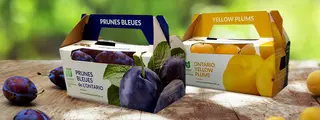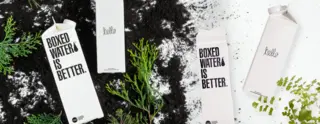Mangoes are one of the fastest growing produce commodities with U.S. consumers. However, the packaging for shipping the delicate fruit was out of step with other types of produce packaging. The National Mango Board (NMB) recognized that, to continue growing the mango’s popularity with Americans, the box needed to improve.
“It was important to have a stronger, bigger box to move through the retail channels more conveniently,” said Manuel Michel, executive director of NMB.
To identify the preferred qualities of the new box design, beginning in 2018, NMB convened a task force of mango growers, handlers, shippers, distributors, retailers and box manufacturers. The organization then turned to the packaging program at Cal Poly University in San Luis Obispo, California, to design a box to meet the needs of supply chain partners.
“Paper was always our choice,” according to Koushik Saha, Ph.D. and associate professor in the Packaging Department at the Orfalea College of Business at Cal Poly who led the design team.
The new box design was tested first at Cal Poly to determine if it would hold up under a variety of conditions. The majority of mangoes are imported to the U.S. from Mexico and Latin America.
“We wanted to ensure this package system will survive the mechanical and natural abuse it may face in the distribution system,” Saha noted. Load stability was a critical factor. “As they travel through the supply chain, one pallet of mangoes can range from 17 to 21 boxes high,” Michel added.
Along with holding up to shipping rigors, sustainability was another important consideration. “With mango trays being imported from overseas, it is a one-way package system. The mango boxes will go straight into the U.S. recycling stream,” Saha explained so recyclable paper was the clear choice.
Food safety is a high priority for American consumers and, again, paper rose to the top as the material of choice for the new mango box. “We know that paper packaging goes through a process where it is heat treated, so it reduces or eliminates microbial contamination,” Michel said.
Another attractive aspect of corrugated paper packaging is the ability to print eye-catching designs on the box. Michel recognized that value at the retail level. “The colorful imagery inspires consumers to select the fruit.”
Following initial testing at Cal Poly, the next step was to test the box in real-world conditions. For this, NMB turned to Amazon Produce Network, the largest importer of mangoes into the U.S. where the new box has addressed the challenges initially identified by the task force.
As the box is rolled out to the mango industry, Michel is excited about the future. “The corrugated box really solves problems,” he noted. “This new box will benefit growers, consumers and everybody in the mango industry.”



